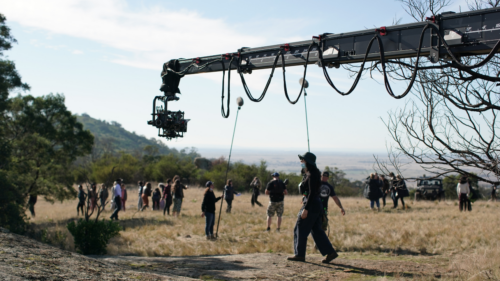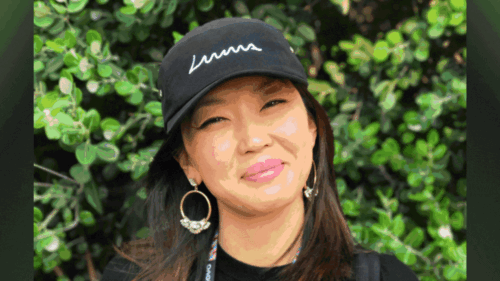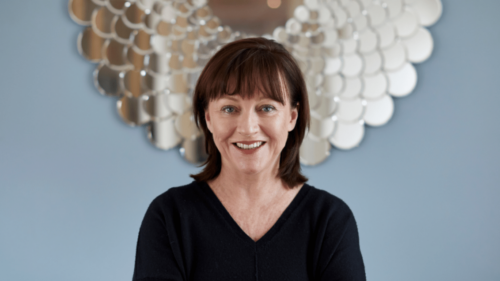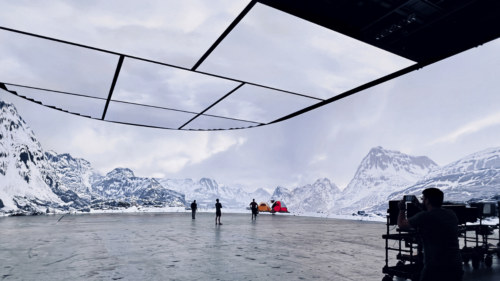/News 02.04.24
Q&A with Framestore’s Head of Studio Lara Hopkins
With a career in VFX and animation spanning more than thirty years and four continents, Framestore Melbourne’s Head of Studio, Lara Hopkins brings formidable experience and passionate energy to her role. In honour of Women’s History Month and International Women’s Day, we chat to Lara about inclusion, inspiration and AFL.
Lara, your career has encompassed a broad variety of roles, from CG manager to recruitment – how does this inform you as Head of Studio?
I realise now that every role I’ve had in the last 25 or 30 years has led me to this moment; I don’t think I could be doing this had I not had those experiences. Starting out in production has given me a real instinct for – and understanding of – what it takes to get a show done. I understand the client dynamic, and I also understand what it’s like to manage a team and be able to keep them on track right through to delivery.
People look at recruitment and think it’s an admin task. But if you’re a good recruiter, you have a deep understanding of what a role entails, and a fantastic overview of all the different departments and what makes a successful team. I always enjoyed producing but what I really love is the creation and management of the artist teams; if you have the right blend of skills it’s reflected in the work – and the work shines. So from the get-go, my passion was setting up a good environment for artists to be able to thrive. If we manage people well, it reflects in our work and a successful business.
People are at the heart of any business, and with your recruitment background, you understand the importance of finding and nurturing young talent – how are Framestore doing that? And how do you keep experienced creatives in the company?
A big passion of mine throughout my career has been finding those junior artists – the ones that you meet and can see that they have this incredible potential – and watching them navigate their career from the very early stages, right through to success. I think the Covid era has been really challenging for juniors, missing out on the opportunity to sit within a team, and having somebody next to you that you can ask questions. Thankfully we’re out of that phase now – we’re working on a hybrid model now and one of the big advantages is that it has enabled us to launch an internship program.
In addition to bringing fresh talent into the building, it’s a way for us to shift some of the gender issues that we have in visual effects – globally most companies sit at around 30% female employees which has slowly started to improve, but we still have a way to go. One way that we can really keep doing that is to make sure that our junior hires are 50/50 at the very least.
We’re looking at growing the studio over the next 12 to 18 months and that enables us to build junior roles into all of our departments.
I think the thing that motivates and inspires our senior artists and supervisors is the work, and one of the wonderful things about the Melbourne studio becoming part of the Framestore global network is it provides us the opportunity to work on some really big shows. With each individual studio being on the Framestore pipeline it means that it’s really easy for these big projects to be divided up amongst all of our network. We each have our own big sequences and our own set of shots so that we’re doing everything on the show from the assets right through the delivery – but with the fantastic advantage of working together to deliver an incredible amount of shots. If you’re working on your own, it’s a lot harder to deliver a 2000-shot show.
I also think that there are a lot of opportunities here in terms of learning and development; there’s never a time in anyone’s career that there isn’t something to be learned and there’s always somebody that’s got more experience than you somewhere! So one of the things that we’re focusing on is the sharing of expertise across all of the studios. I want to make sure that everybody here in Melbourne feels very connected to the global teams, building up those relationships, creating opportunities to visit the other studios. There’s a lot there that we can do to help people evolve at all levels of their career.
You’re in a unique position to foster that connectedness, having worked at or helped to set up most of the Framestore offices – with that perspective, can you talk about what makes the Melbourne office unique?
Visual effects can be quite transient, people move around a lot between companies. But so many people here have worked together for so long, and there’s something about the culture that breeds when you have people who have grown in their careers and gone through challenges together.
The Melbourne studio has also always produced such beautiful work, and their passion for their work is second to none. The team is known globally by our clients as a really fantastic studio to work with. And the clients now know that they’re not only tapping into the Melbourne studio, who they’re already familiar with, but also tapping into the global network of the company, and the support of all the other studios that comes with that.
Who are some women in the industry that have inspired you or have been instrumental in your career over the years, and how?
One of the reasons I wanted to come back [to Framestore] was to work with Fiona Walkinshaw (CEO, Film and Episodic) and also Mel Sullivan (Global CEO). I worked with both of them at Framestore in the early 2000s and I always found them to be incredibly inspiring. They enabled me to navigate those early years of having children. Their kids are only a little bit older than mine and I watched how they juggled their time. They managed to maintain their careers, and that assured me that I could do the same. Both Fiona and Mel bring a great deal of experience and knowledge to their roles; they are also very kind and passionate people and they bring a different type of leadership to the company as women, which I really appreciate and I’m really inspired by.
Inclusion and diversity are subjects close to your heart – how do you foster that in the workplace?
The most successful teams are those that have a combination of different genders and backgrounds and diversity of beliefs – it brings out the best in people. Teams like that positively influence the work that we produce. Everyone’s coming at it with a slightly different eye and a slightly different lived experience. And I do believe that can be reflected in the stories that we tell as well.
Recent conversations about gender pay inequities in Australia have had me thinking: why is this glass ceiling still there? Enrollments of many university degrees are more than 50% women. What is happening to not see that reflected in senior leadership roles? I do hope that over the course of my career, I can make some more inroads on this front. Something in particular I would like to focus on is the lack of women in supervision roles. I had a comment shared with me recently regarding women not wanting leadership roles because they want to take career breaks to look after their children. Companies need to be able to help people navigate through those years. I think my own career has really been a reflection of that, where I was supported and able to take on some part-time roles. I saw it not as a straight line, but a bit of a side step here and there until I got to the point where I could actually dedicate the time needed to take on a leadership role – and now here I am as Head of Studio at 50.
I find The Wife Drought by Annabel Crabb really inspiring – she talks a lot about creating flexibility for men in order to help women navigate their careers. Often men don’t feel that they can ask for a career break, or go part time because of this idea that ‘men don’t ask for that’. We already have one of our Heads of Department working a four-day week so that he can spend more time with his kids. Asking for flexibility doesn’t mean that you cannot take a leadership role. We have to figure out a way of allowing parents to continue to engage in the work that they love and the career that they love. We need to facilitate people who are contributing at a high level with the flexibility to get through times in their lives when outside demands are substantial.
I hear you like listening to management podcasts when you walk your dogs – got any recommendations?
I love Brené Brown’s Unlocking Us – her conversations around vulnerability and leadership really strike a chord with me. There’s an ABC podcast called This Working Life that I particularly enjoy as a lot of the management podcasts are quite global in perspective, whereas the host, Lisa Leong manages to provide more of a local context. I also really like Adam Grant’s Work Life – and though it’s not a management podcast, I’m also a big fan of Chat 10 Looks 3 with Annabel Crabb and Leigh Sales.
One final question – now that you’re running a Melbourne studio – has there been pressure to choose an AFL team and if so – who do you barrack for?
I’m from Adelaide, so I did grow up with AFL, though I was never a Crows fan. I really liked Essendon when I was at university, I think that was because I had a slight crush on Gavin Wanganeen. But I moved to Sydney when I was quite young and so the Sydney Swans are really my team. I love sports in general – I went to the Australian Open this year and I really enjoy the way it’s staged as a festival. I think Melbourne does sport beautifully, and I love women’s AFL, so I’m really looking forward to the full Melbourne immersion on that front.










